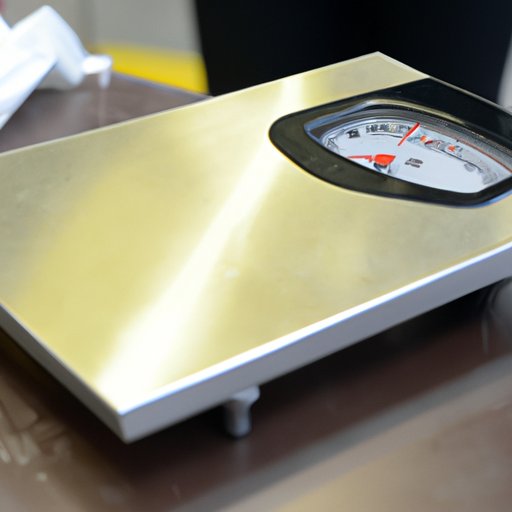
Introduction
When it comes to measurements and calculations in chemistry, pharmacy, and food industries, weight percent plays a crucial role in determining the correct compositions of solutions. Knowing how to calculate weight percent accurately can greatly impact the success of experiments and products. This guide will help beginners and professionals to understand the importance of weight percent measurements and how to calculate them with precision.
A Beginner’s Guide: How to Calculate Weight Percent in Simple Steps
Weight percent is defined as the weight of a solute, which is the substance in lower concentration, divided by the total weight of the solution, and multiplied by 100. This measurement is important because it characterizes the concentration of substances in solutions. The formula for calculating weight percent is as follows:
Weight percent = (Weight of Solute / Weight of Solution) x 100
To calculate weight percent, start by weighing the solute carefully, then dissolve it in the solvent to prepare the solution. After that, measure the weight of the solution by adding the weight of the solute and the weight of the solvent. Finally, substitute the weights into the formula and multiply by 100 to get the weight percent.
For instance, if you have 50 grams of sugar (solute) and 250 grams of water (solvent), the weight percent of sugar in water would be:
Weight percent = (50 / 300) x 100 = 16.67%
This calculation shows that 16.67% of the solution is sugar.
The Importance of Weight Percent: How to Calculate it for Accurate Measurements
Accurate weight percent measurements are crucial in various fields, including the chemical industry, where certain chemical reactions require precise amounts of reagents. Inaccuracies in weight percent measurements can lead to detrimental effects on experiments or product quality, which can potentially damage the reputation of businesses. When calculating weight percent, it’s important to consider factors such as temperature and pressure as they can impact the concentration of solutions and affect the accuracy of results.
Mastering the Art of Weighing: How to Calculate Weight Percent like a Pro
Choosing the right weighing instrument is the first step towards calculating weight percent accurately. With the right weighing scale, you get accurate measurements, which are essential to obtain accurate weight percent. You should choose a scale with a proper calibration for the type of measurement you want to take. Techniques for weighing substances accurately involve using the right containers and ensuring that they are free from impurities. Techniques for avoiding errors such as evaporation or contamination are essential.
The Science of Accurately Measuring: Tips for Calculating Weight Percent with Precision
To obtain precise weight percent measurements, it’s important to consider additional factors, such as solvent properties, density, and purity. One critical formula that needs to be considered is the optical rotation formula, which is used to measure the angle of rotation of polarized light through a solution. In addition to that, you should maintain dryness, proper units, and temperature and pressure conditions when working with solutions.
Calculating Weight Percent: A Step-by-Step Guide for Lab Technicians and Researcher
Professional researchers use advanced techniques such as spectroscopy, chromatography, and titration in determining the weight percent of solutions. Lab technicians may encounter difficulties during weight percent calculations, for example, determining the correct mass of solutes or accurately measuring the amount of solvent. However, with the right guidelines and strategies, they can improve their skills and obtain accurate results.
Conclusion
Knowing how to calculate weight percent accurately is essential in many areas, especially in the chemical, pharmaceutical, and food industries, where the slightest discrepancy can affect the quality of outcomes. By following the guidelines written in this article, beginners and professionals can master the art of calculating weight percent and ensure accuracy in their measurements.




